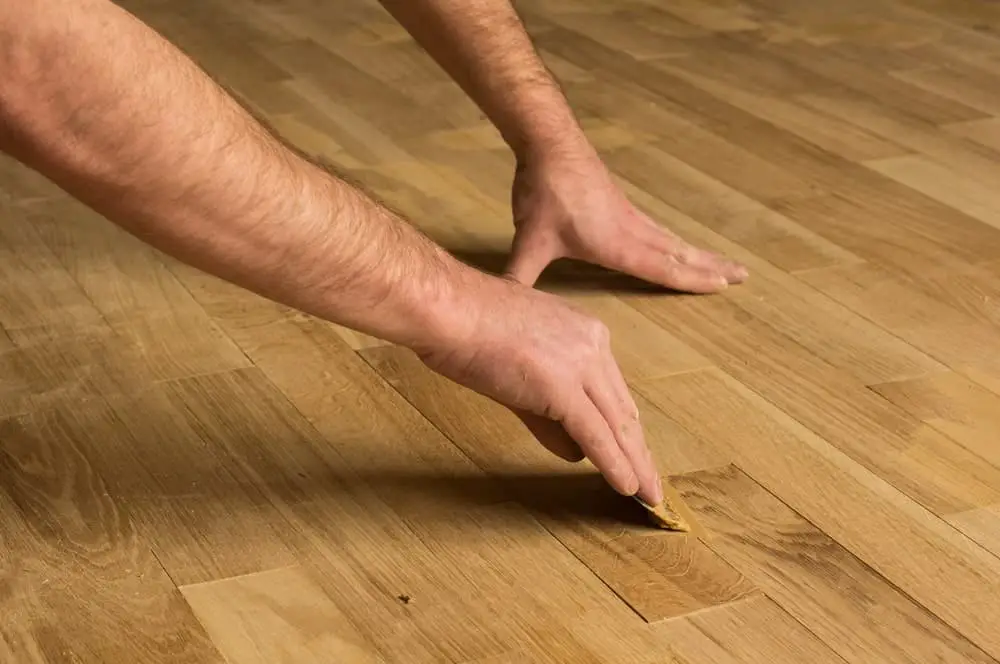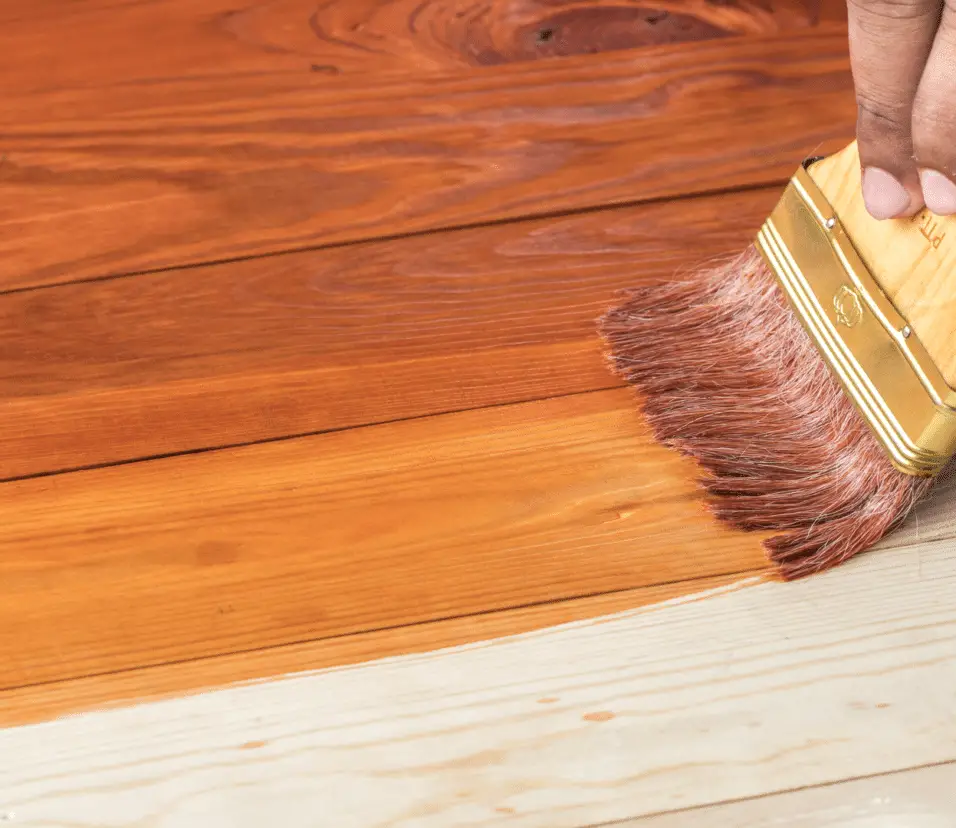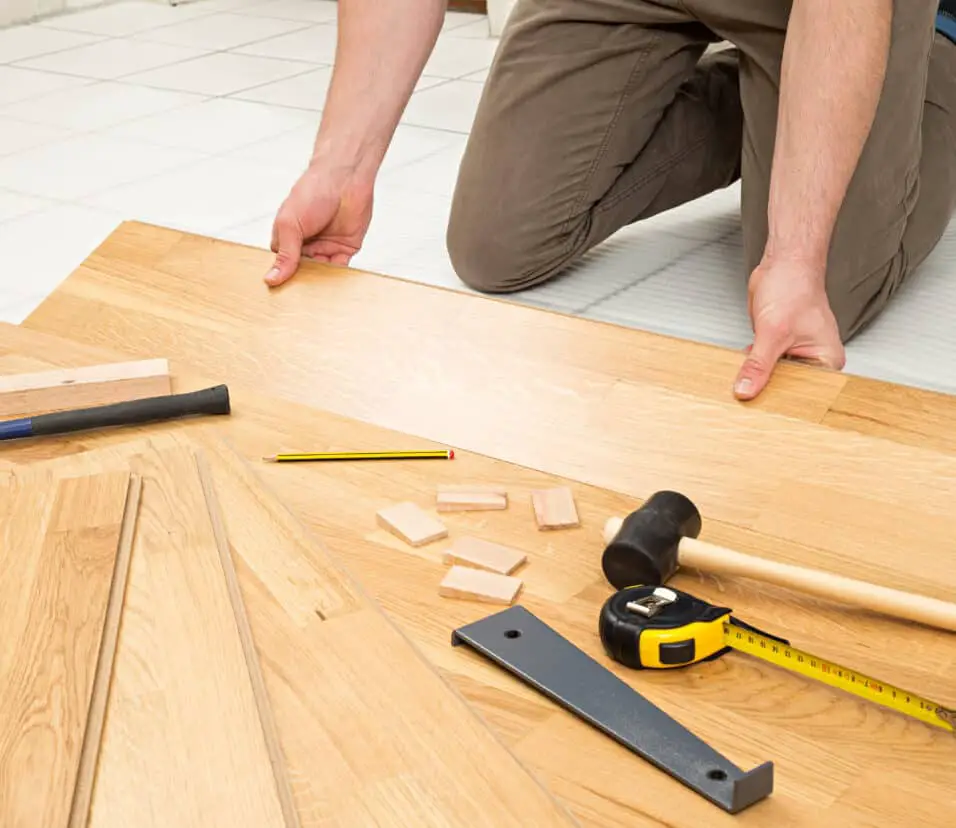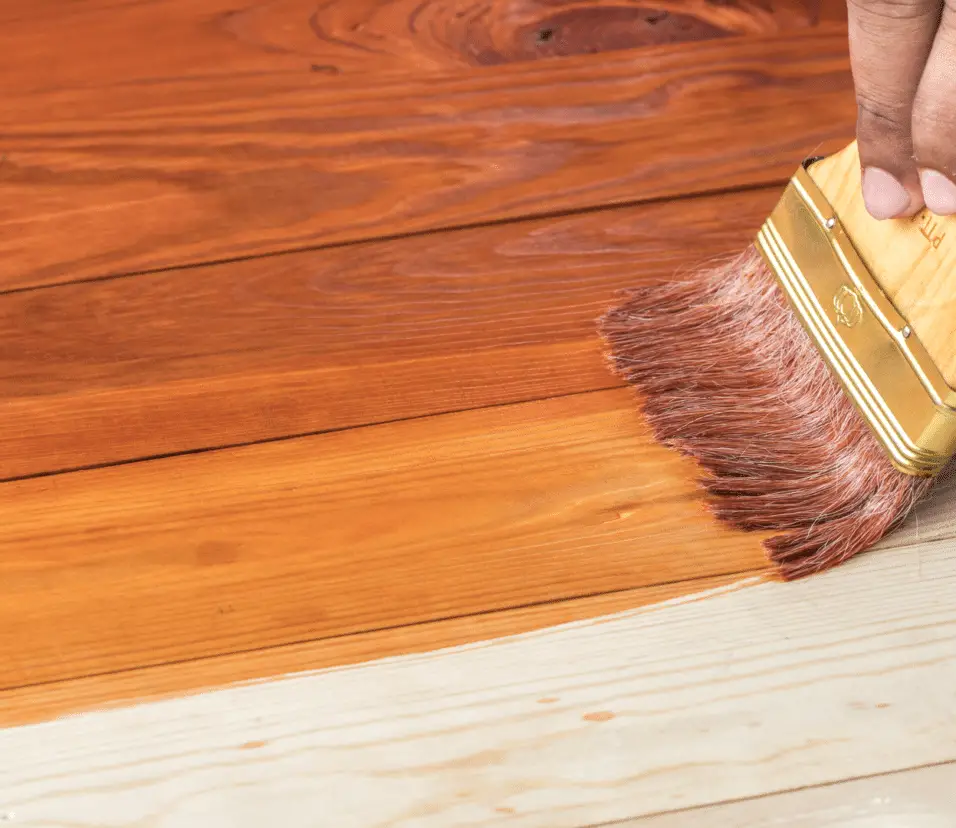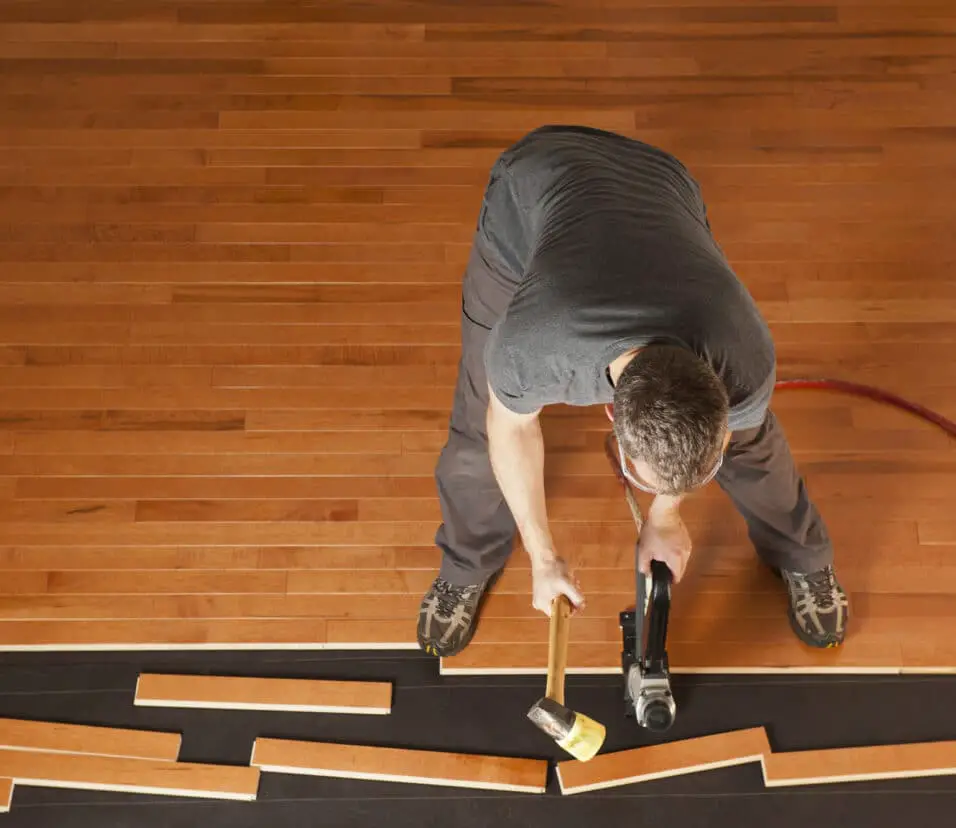How To Fix Scratches On Laminate Wood Floor
Introduction
How To Fix Scratches On Laminate Wood Floor: Laminate wood flooring is a popular choice for homeowners due to its durability, affordability, and aesthetic appeal. However, like any other type of flooring, laminate wood floors are not completely immune to scratches. Fortunately, there are effective methods to fix scratches and restore the pristine look of your laminate wood floor. First and foremost, it is important to assess the depth of the scratches before attempting any repairs. Shallow scratches are those that do not penetrate the protective layer of the laminate, while deep scratches go beyond the surface and may require more extensive repairs.
For shallow scratches, a simple and cost-effective solution is to use a fill gaps laminate floor repair kit. These kits typically include a color-matched putty or wax crayon that can be applied directly to the scratches. Using a putty knife or the applicator provided in the kit, the filler is applied to the scratches, ensuring they are completely filled. Excess filler can then be removed using the putty knife, and the area can be buffed gently with a soft cloth to blend it with the surrounding floor.
In the case of deep scratches, the damaged plank may need to be replaced. This can be done by carefully removing the damaged plank and installing a new one. Alternatively, a laminate floor repair paste can be used to fill in the scratches. The paste is applied to the scratches, leveled using a putty knife or a specialized tool, and allowed to dry. Sanding and refinishing the area may also be necessary to achieve a seamless finish.
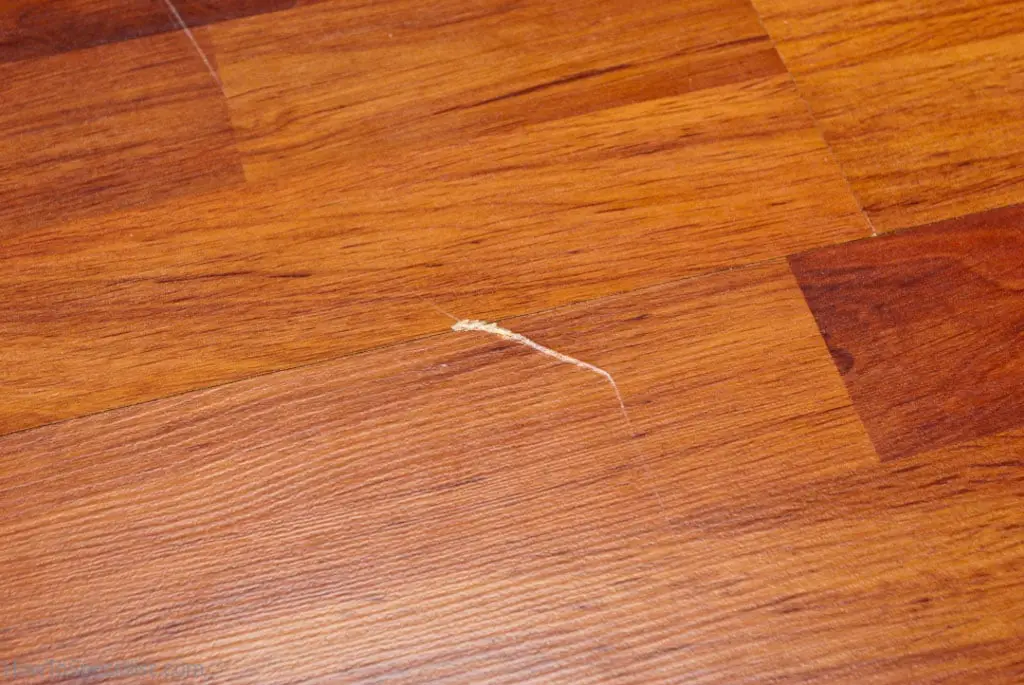
How do you repair deep scratches on laminate flooring?
Floor putty ($5–$10): The putty is good for fixing deep scratches. Use a putty knife at a 45-degree angle and work it in from all sides until you fill the groove to the top. Then, use the edge of the knife and scrape it to remove any excess. Let dry for a full day.
Repairing deep scratches on laminate flooring can help restore its appearance and extend its lifespan. While laminate is known for its durability, it is not immune to scratches. Here are some steps you can take to repair deep scratches on laminate flooring:
Clean the area
Before attempting any repairs, clean the scratched area with a mild cleaner and a soft cloth. This will remove any dirt or debris that could interfere with the repair process.
Assess the scratch
Evaluate the depth and severity of the scratch. If it is a shallow surface scratch, you may be able to use a laminate repair kit or a colored wax crayon to fill in the scratch. However, for deeper scratches, you will need a different approach.
Fill the scratch
For deep scratches, you can use a laminate floor repair putty or filler specifically designed for this purpose. Apply the putty or filler to the scratch, following the manufacturer’s instructions. Use a putty knife or a plastic scraper to level the surface, making it flush with the surrounding laminate.
Sand and blend
Once the putty or filler has dried, gently sand the repaired area using fine-grit sandpaper. This will help smooth out any rough edges and create a seamless blend with the rest of the floor. Be careful not to sand too aggressively, as it may damage the surrounding laminate.
Clean and protect
After sanding, clean the area again to remove any dust or debris. You can use a damp cloth or a vacuum cleaner with a soft brush attachment. Finally, apply a laminate floor polish or sealant to protect the repaired area and restore its shine.
It’s important to note that while these steps can help minimize the appearance of deep scratches, they may not completely eliminate them. If the scratches are extensive or the damage is beyond repair, you may need to consider replacing the affected laminate boards or seeking professional assistance.
Why do laminate floors scratch so easily?
Laminate floors have different finishes, and a matte, satin or gloss look is always going to scratch more easily than an embossed(textured) finish. It really comes down to what sort of flooring will match your lifestyle and how much activity is happening in the rooms where you’re putting it.
Laminate floors can scratch more easily compared to other types of flooring due to their composition and surface characteristics. Here are a few reasons why laminate floors are prone to scratches:
Wear Layer
There are many layers in a laminate floor, the topmost of which is a wear layer. The purpose of the wear layer is to prevent the floor from being damaged by everyday foot traffic. However, the material is typically aluminium oxide or melamine, both of which are transparent, thin, and rather soft. While this layer offers some defence, it can be damaged by sharp items or heavy furniture.
Hardness
Laminate floors are generally less hard than natural materials like hardwood or tile. While laminate flooring is engineered to be durable, it is still more susceptible to scratches and dents compared to harder surfaces. Sharp objects or heavy items dragged across the laminate surface can cause visible scratches.
Surface Texture
Laminate flooring often features a textured surface to mimic the look and feel of natural materials like wood or stone. While this texture enhances the aesthetic appeal, it can also make the surface more prone to scratching. The raised ridges and grooves can catch and hold onto debris, which can act as abrasive agents and cause scratches when dragged across the floor.
Maintenance and Cleaning
Improper maintenance and cleaning techniques can also contribute to laminate floor scratches. Using harsh or abrasive cleaning agents, rough scrub brushes, or excessive water can damage the protective wear layer and make the surface more vulnerable to scratching. It’s essential to follow the manufacturer’s guidelines for proper care and maintenance to minimize the risk of scratches.
Furniture and Pet Claws
Dragging heavy furniture or appliances across the laminate floor without protective pads can result in scratches. Similarly, pet claws, especially if they are not trimmed or have sharp edges, can easily scratch the surface when running or jumping on the floor.
To minimize scratches on laminate flooring, it’s advisable to use furniture pads or felt protectors under heavy furniture, regularly trim pet claws, and use gentle cleaning methods. Additionally, placing mats or rugs in high-traffic areas can help reduce the risk of scratches caused by debris or abrasive particles.
How Do You Smooth Scratches On A Wood Floor?
Olive Oil and Baking Soda
These pantry staples are a great way to minimize or remove scratches on hardwood floors. Create a paste by adding several drops of olive oil to baking soda and apply it to the scratched area. Let it sit for five minutes, and then gently buff it using a soft cloth or sponge.
Smoothing scratches on a wood floor can help restore its appearance and maintain its beauty. Here are some steps you can take to smooth scratches on a wood floor:
Clean the area
Before attempting any repairs, clean the scratched area with a mild cleaner and a soft cloth. This will remove any dirt or debris that could interfere with the repair process.
Assess the scratch
Think about how deep it is and how bad it looks. Simple approaches can typically be used to minimise or erase shallow surface scratches, whereas more sophisticated processes may be required for deeper scratches.
Minor surface scratches
For minor surface scratches, you can try using a fine-grade steel wool or sandpaper (220 grit or higher) to gently rub the scratch. Always rub in the direction of the wood grain to avoid further damage. Afterward, clean the area again to remove any debris and apply a wood floor polish or wax to restore the shine.
Deeper scratches
For deeper scratches that cannot be removed by sanding alone, you may need to fill them with wood filler. Choose a wood filler that matches the color of your floor. Apply the filler to the scratch, following the manufacturer’s instructions. Use a putty knife or a plastic scraper to level the surface, making it flush with the surrounding wood. Allow the filler to dry thoroughly before sanding.
Sand and blend
Once the filler has dried, gently sand the repaired area using fine-grade sandpaper. Start with a higher grit (220 or higher) and gradually work your way to a finer grit (320 or higher) to smooth the surface. Remember to sand along the wood grain and be careful not to oversand or create uneven patches. After sanding, clean the area again to remove any dust or debris.
What will ruin laminate flooring?
Laminate floors are durable, but they can scratch or scuff, so avoid things like steel wool as well. Although laminate is a hard floor, you want to avoid steam cleaning to tackle tough stains as it can loosen that top protective layer and damage the surface.
Laminate flooring has a strong reputation for being long-lasting, but it is still vulnerable to damage from a number of sources. Here are some things that can harm laminate flooring:
Excessive moistur
Laminate flooring is not waterproof, and prolonged exposure to moisture can cause swelling, warping, and delamination of the boards. Avoid installing laminate in areas prone to high humidity or where there is a risk of water spills, such as bathrooms or laundry rooms. In case of spills, clean them up immediately to prevent water from seeping into the joints.
Standing water
Leaving standing water on laminate flooring can have severe consequences. Water can seep into the joints, causing the boards to swell, warp, or develop mold and mildew. Avoid wet mopping or using excessive water during cleaning. Instead, use a damp mop or a laminate-specific cleaner recommended by the manufacturer.
Heavy impact
Heavy impact or sharp items can harm laminate flooring. Dropping heavy objects or dragging furniture without protective pads can cause dents, scratches, or chipping. Take care when moving heavy items and use furniture pads or felt protectors to prevent damage.
Abrasive cleaning tools
Using rough scrub brushes, steel wool, or abrasive cleaning agents can scratch or dull the surface of laminate flooring. Stick to soft cloths, microfiber mops, or soft-bristle brooms for regular cleaning. Avoid harsh chemicals and abrasive tools that can wear away the protective wear layer.
Incorrect installation
Improper installation can lead to various issues that can ruin laminate flooring. If the flooring is not properly acclimated or the subfloor is not prepared adequately, it can cause buckling, gaps, or unevenness. It’s essential to follow the manufacturer’s installation guidelines or hire a professional installer to ensure a proper and stable installation.
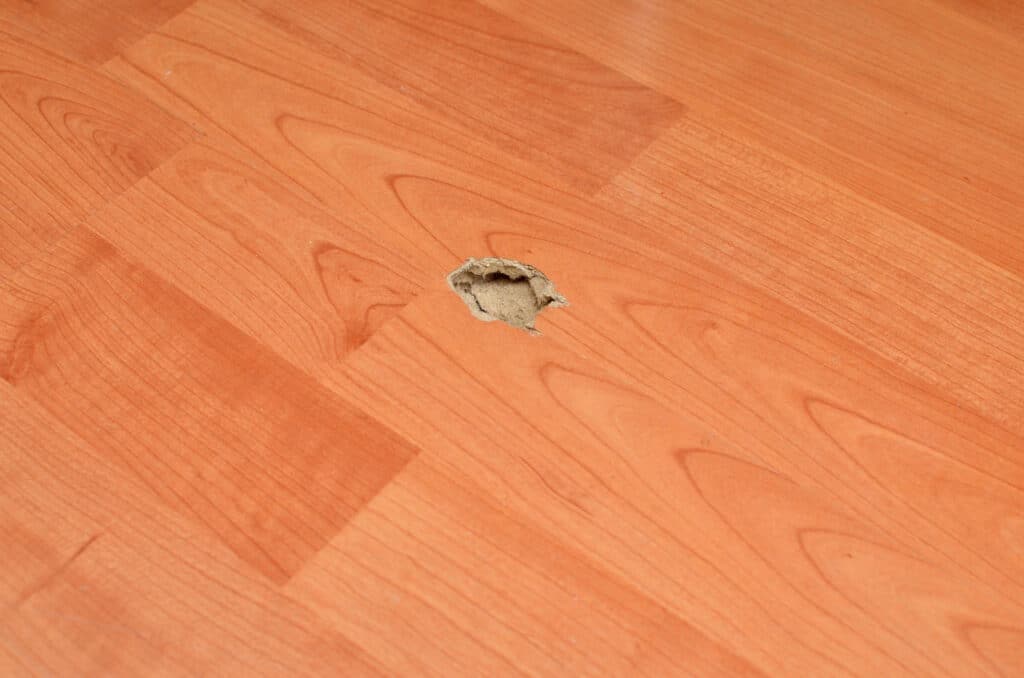
Can Scratched Wood Floors Be Repaired?
If there are lots of scratches, or significant scuff and damage marks, it may be necessary to sand the floor and refinish it. For areas with wide gouges, you can use wood filler to fill in the gouges, followed by staining and refinishing the damaged areas.
Scratched wood floors can often be repaired to restore their appearance and minimize the visible damage. The method of repair will depend on the depth and severity of the scratches. Here are some common approaches to repairing scratched wood floors:
Minor surface scratches
For minor surface scratches, there are several techniques you can try. One option is to use a fine-grade steel wool or sandpaper (220 grit or higher) to gently rub the scratch. Always sand in the direction of the wood grain to avoid further damage. Another method is to use a wood floor cleaner and a soft cloth to buff out the scratch. Afterward, apply a wood floor polish or wax to enhance the shine and blend the repaired area with the rest of the floor.
Deeper scratches
Deeper scratches may require a more involved repair process. One method is to fill the scratches with wood filler that matches the color of the floor. Apply the filler to the scratch, following the manufacturer’s instructions, and use a putty knife or a plastic scraper to level the surface. Once the filler has dried, sand it gently to smooth out the area and blend it with the surrounding wood. Finish by applying a wood floor finish or sealant to protect the repaired area.
Board replacement
In cases where the scratches are extensive or if the damage is limited to a specific section of the floor, it may be necessary to replace the affected boards. This method requires removing the damaged boards and installing new ones.It’s important to note that while these methods can effectively repair many scratches, deep gouges or severe damage may be more challenging to fix. In such cases, consulting a professional floor refinisher or seeking advice from an expert is recommended.
Can Scratches On Laminate Wood Floors Be Fixed?
Scratches on laminate wood floors can be fixed to improve their appearance. The extent of the repair will depend on the depth and severity of the scratches. Here are some methods you can try to fix scratches on laminate wood floors:
Laminate repair kits
Many manufacturers offer laminate repair kits that include materials like colored wax or putty designed to fill and blend in scratches. Clean the scratched area, apply the filler or wax to the scratch, and use a putty knife or plastic scraper to level the surface. Follow the manufacturer’s instructions for drying and finishing the repaired area.
Colored wax crayons
For shallow surface scratches, you can use colored wax crayons that match the color of your laminate floor. Gently rub the wax crayon back and forth over the scratch, filling it in. Use a clean cloth to remove any excess wax and buff the area to blend it with the rest of the floor.
Homemade solutions
If you don’t have a repair kit or wax crayons, you can try making a homemade solution. Mix equal parts vinegar and olive oil or vegetable oil. Dip a soft cloth in the mixture and gently rub it over the scratch. The oil can help minimize the appearance of the scratch, while the vinegar cleans the area. Wipe off any excess solution and buff the area to blend it with the rest of the floor.
Replacement planks
If the scratches are extensive or the damage cannot be repaired using the above methods, you may need to replace the affected laminate planks. This process involves carefully removing the damaged planks and installing new ones.
How can I fix deep scratches on my laminate wood floor?
Fixing deep scratches on laminate wood floors can be a bit more challenging than surface scratches. However, with the right approach, you can improve the appearance of deep scratches. Here’s a step-by-step guide on how to fix deep scratches on laminate wood floors:
Clean the area
Start by cleaning the scratched area with a mild cleaner and a soft cloth to remove any dirt or debris. This will ensure that the repair materials adhere properly and provide a better finish.
Assess the scratch
Evaluate the depth and severity of the scratch. Deep scratches may require a combination of methods to effectively repair them.
Fill the scratch
Use a laminate floor repair putty or filler specifically designed for deep scratches. Apply the putty or filler to the scratch, ensuring it fills the entire depth of the scratch. Use a putty knife or a plastic scraper to level the surface, making it flush with the surrounding laminate. Follow the manufacturer’s instructions regarding drying time.
Sand the area
Once the putty or filler has dried, gently sand the repaired area using fine-grit sandpaper (320 grit or higher). Sand in a circular motion, gradually expanding to include the surrounding laminate. The goal is to smooth out the repaired area and create a seamless blend with the rest of the floor. Be careful not to sand too aggressively, as it may damage the surrounding laminate.
Clean and protect
After sanding, clean the area again to remove any dust or debris. Use a damp cloth or a vacuum cleaner with a soft brush attachment. Finally, apply a laminate floor polish or sealant to protect the repaired area and restore its shine.
It is advisable to seek professional assistance if the deep scratches are substantial or if you are unsure of the repair method. They can provide expertise and ensure a high-quality repair.
Remember to always follow the manufacturer’s guidelines for any products used and test them on a small, inconspicuous area of your laminate wood floor before applying them to the entire scratch.
Are there any home remedies to fix scratches on laminate wood floors?
While there are some home remedies that can help improve the appearance of scratches on laminate wood floors, it’s important to note that they may not provide a permanent or completely seamless solution. Here are a few home remedies you can try:
Olive oil and vinegar: Mix equal parts olive oil and vinegar in a small bowl. Dip a soft cloth into the mixture and gently rub it over the scratch. The oil helps minimize the appearance of the scratch, while the vinegar cleans the area. Wipe off any excess solution and buff the area to blend it with the rest of the floor.
Baking soda and water paste: Make a paste by mixing baking soda with water. Apply the paste to the scratch and gently rub it using a soft cloth. The mild abrasive properties of baking soda can help reduce the visibility of the scratch. Once done, clean the area and dry it thoroughly.
Shoe polish: Find a shoe polish that closely matches the color of your laminate floor. Apply a small amount of the shoe polish to a soft cloth and gently rub it over the scratch. This can help mask the scratch and blend it with the surrounding area. Wipe off any excess shoe polish and buff the area to achieve a smooth finish.
It’s important to remember that these home remedies may provide temporary relief and improve the appearance of the scratch, but they may not be a permanent fix. Use specialised laminate floor repair products or get expert help for deeper or more extensive scratches.
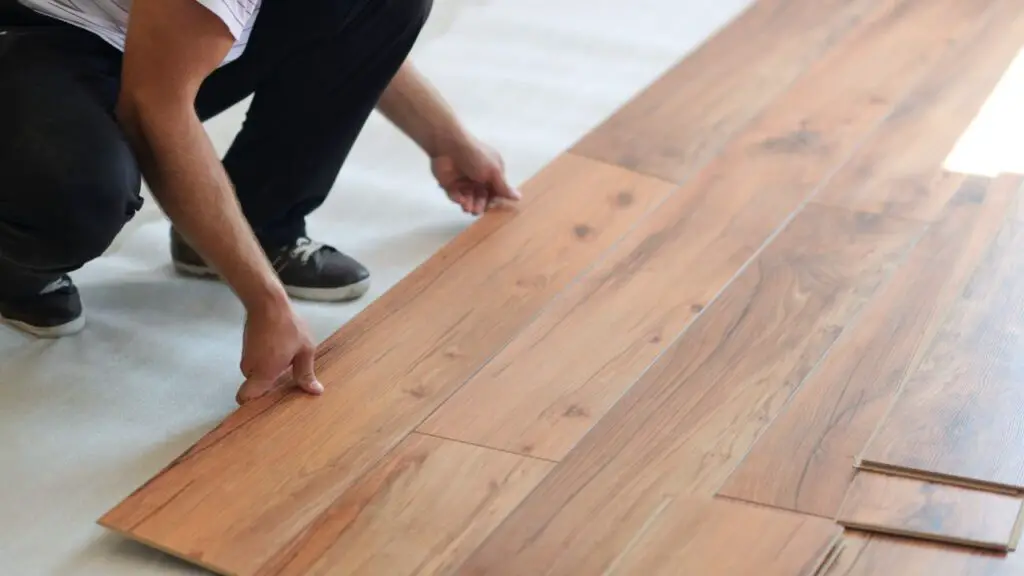
Conclusion
Fixing scratches on laminate wood floors is possible and can help restore their appearance. The methods employed will depend on the depth and severity of the scratches. It’s essential to choose the right approach and follow the necessary steps for effective repair. For minor surface scratches, options such as using fine-grade steel wool, sandpaper, or colored wax crayons can help minimize or eliminate the scratches.
These techniques are straightforward, and they just require common household items. Deeper scratches may require additional steps such as using laminate floor repair putty or filler. By filling the scratches and leveling the surface, you can achieve a more laminate floor seamless finish. Sanding the repaired area gently and applying a laminate floor polish or sealant will help blend the repaired area with the rest of the floor.
It’s worth noting that while there are home remedies and do-it-yourself techniques available, they may not provide a permanent or completely flawless repair. For extensive or severe damage, seeking professional assistance or considering plank replacement may be necessary. Prevention is always key in maintaining the condition of laminate wood floors. Using furniture pads, area rugs, and practicing gentle cleaning techniques can help prevent scratches from occurring in the first place. Regular maintenance and proper care will prolong the lifespan of your laminate wood floors.



